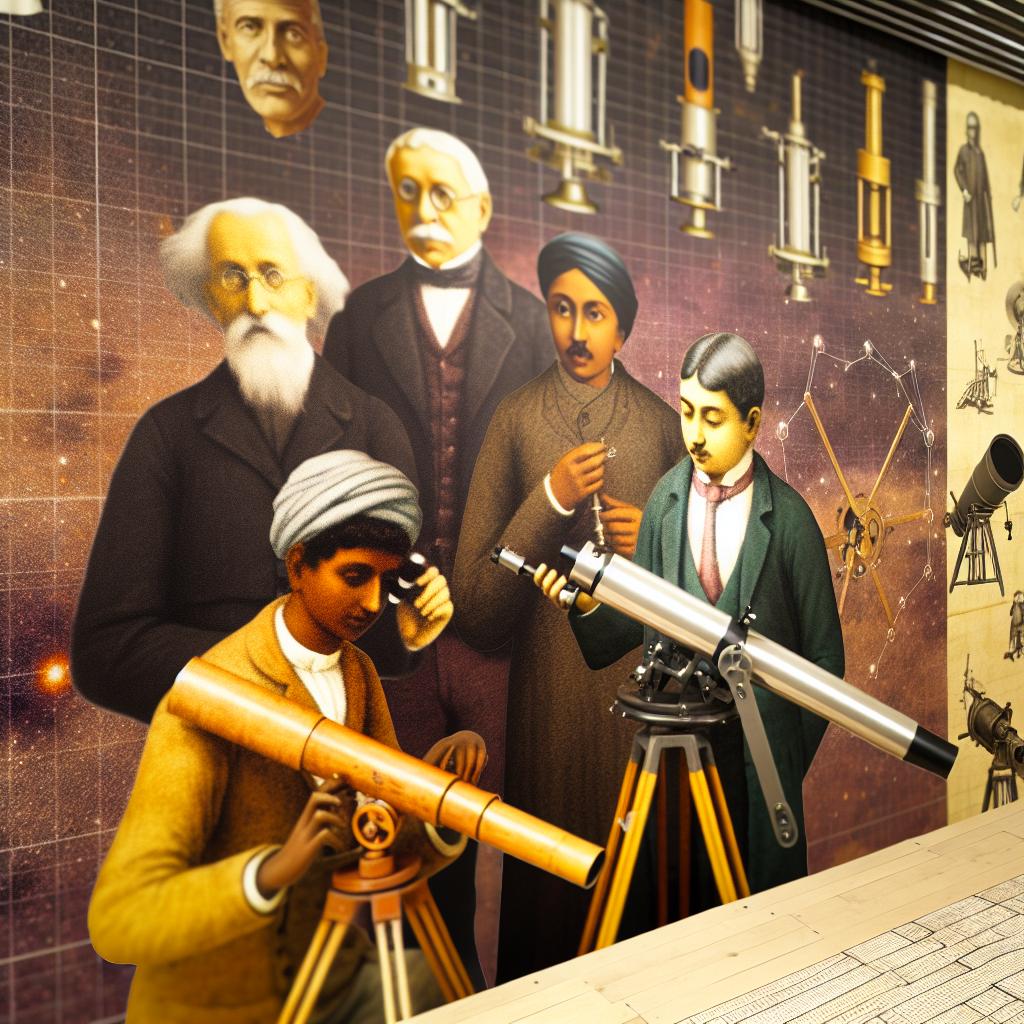The Origins of the Telescope
The invention of the telescope marks a pivotal moment in the history of science and technology. Though it is widely believed that the telescope was first developed in the Netherlands, tracing its exact origin can be somewhat complex. It is often attributed to Hans Lippershey, a German-Dutch spectacle maker, who applied for a patent in 1608. While Lippershey is often credited with its invention, there were other claims around the same time, including those by Zacharias Janssen and Jacob Metius.
The emergence of the telescope was not just a result of individual ingenuity but rather a culmination of various optical discoveries dating back to ancient times. Prior to the 17th century, there were significant advancements in understanding lenses and light refraction. The work done by Arab scientists like Alhazen (Ibn al-Haytham) laid down the fundamentals of optics which would later facilitate the creation of the telescope. European interest in optical devices like the camera obscura and magnifying glasses during the Renaissance also contributed to a fertile ground for the telescope’s development.
Galileo Galilei and the Astronomical Revolution
Though the initial invention wasn’t designed specifically for astronomical purposes, it quickly captivated the scientific community. Galileo Galilei was one of the first individuals to use the telescope for astronomical observations. Around 1609, he improved upon the original design by increasing its magnification capabilities. With this enhanced instrument, Galileo made several monumental discoveries, including the moons of Jupiter, the phases of Venus, and the detailed observation of the moon’s surface. These findings challenged prevailing geocentric models of the universe and played a crucial role in advancing heliocentric theories.
Galileo’s discoveries were groundbreaking. By revealing moons orbiting Jupiter, he provided tangible evidence that not all celestial bodies orbited the Earth. His observations of Venus’ phases offered significant support for the Copernican model of the solar system, which posited that planets orbited the sun. Additionally, Galileo’s detailed sketches of the moon documented its rough surface contrary to the formerly held belief of a smooth, perfect celestial sphere. His advocacy for the heliocentric model, however, ultimately led to conflicts with the Catholic Church.
The Contributions of Johannes Kepler
A contemporary of Galileo, Johannes Kepler made significant theoretical contributions to the field. He proposed the Keplerian telescope design, which differed from previous models by using two convex lenses. This configuration allowed for a wider field of view and better image quality, setting the stage for future advancements in optical telescope design. While Kepler’s designs were not immediately adopted in practice, they provided a critical theoretical foundation.
Kepler’s insights did not only enhance optical designs but also enriched the theoretical framework of astronomy. His laws of planetary motion, describing the elliptical orbits of planets and their variable speeds, were pivotal. They informed future observations and calculations, further cementing the shift from geocentric to heliocentric models. Though Kepler faced numerous challenges, including lack of financial support and political turmoil, his legacy in astronomy and optics endures.
Isaac Newton and the Reflecting Telescope
The next major leap in telescope technology came with the work of Isaac Newton. In 1668, Newton developed the first practical reflecting telescope, known as the Newtonian telescope. He employed a curved mirror to gather light, which reduced chromatic aberrations that plagued earlier refracting telescopes. This innovation significantly enhanced image clarity and paved the way for modern optical telescopes.
Newton’s introduction of the reflecting telescope addressed some key limitations of refractors. Chromatic aberrations, or the distortion of color due to how lenses refract light, were minimized with mirrors that collected light and focused it onto a single point. Newton’s work also coincided with his broader contributions to physics and mathematics, such as the formulation of the laws of motion and universal gravitation.
The Reflector vs. Refractor Debate
The invention of the reflecting telescope incited a debate that persisted for centuries: whether refracting or reflecting telescopes were superior. Reflecting telescopes, with their mirrors, were lighter and could be built larger since mirrors can be supported from the back, unlike lenses. However, refracting telescopes continued to be favored by some astronomers because of their straightforward design and ease of use.
This debate led to innovations on both sides, with each design finding its niche applications. The clarity and stability of refractors made them suitable for detailed planetary observations, while the scalability of reflectors opened new avenues for deep-space exploration. This divergence underscored the need for specialized instruments tailored to specific observational goals.
The Era of Modern Telescopes
As technology advanced, so too did our ability to peer further into the cosmos. In the 20th century, telescopes like the Mount Wilson Observatory’s 100-inch Hooker telescope, completed in 1917, provided unprecedented views of distant galaxies. The introduction of space telescopes, such as the Hubble Space Telescope, launched in 1990, revolutionized our understanding of the universe by eliminating atmospheric distortion entirely.
These modern innovations have allowed astronomers to collect data not only in visible light but also across a spectrum of electromagnetic emissions. Developments in detectors and adaptive optics have further refined observations, allowing phenomena like gravitational lensing, star formation, and black hole activity to be studied with precision unimaginable just decades earlier.
Continued Innovations and the Future
Today, telescope technology continues to evolve with projects like the James Webb Space Telescope. These modern marvels build on the pioneering work of early astronomers, offering new ways to explore the universe. From radio telescopes to infrared observatories, each innovation allows humanity to uncover more secrets of the cosmos.
Looking forward, the potential for new discoveries is vast. Upcoming projects aim to explore phenomena such as dark matter and dark energy, search for habitable exoplanets, and continue probing deeper into cosmic history. As computational power improves and materials science advances, the telescopes of tomorrow promise to herald even more profound insights into our universe. Understanding the history of the telescope not only illuminates the technological advances of the past but also inspires future generations to continue exploring our universe.
This article was last updated on: June 28, 2025


